TRP’s DH-R EVO brakes have been made for the toughest, longest and most demanding descents at World Cup level downhill racing. This means every bit of their design has been meticulously sculpted for what TRP claims to be the highest amount of performance possible.
The brand has sponsored many big-name downhill World Cup riders, including Britain’s Brendan Fairclough and the USA’s Aaron Gwin, who’ve helped with the development of TRP’s products.
I’ve been testing a set of its DH-R EVO brakes on my Yeti SB165 long-term test bike since summer 2020 to find out whether TRP’s performance claims hold up.
TRP DH-R EVO details and specifications
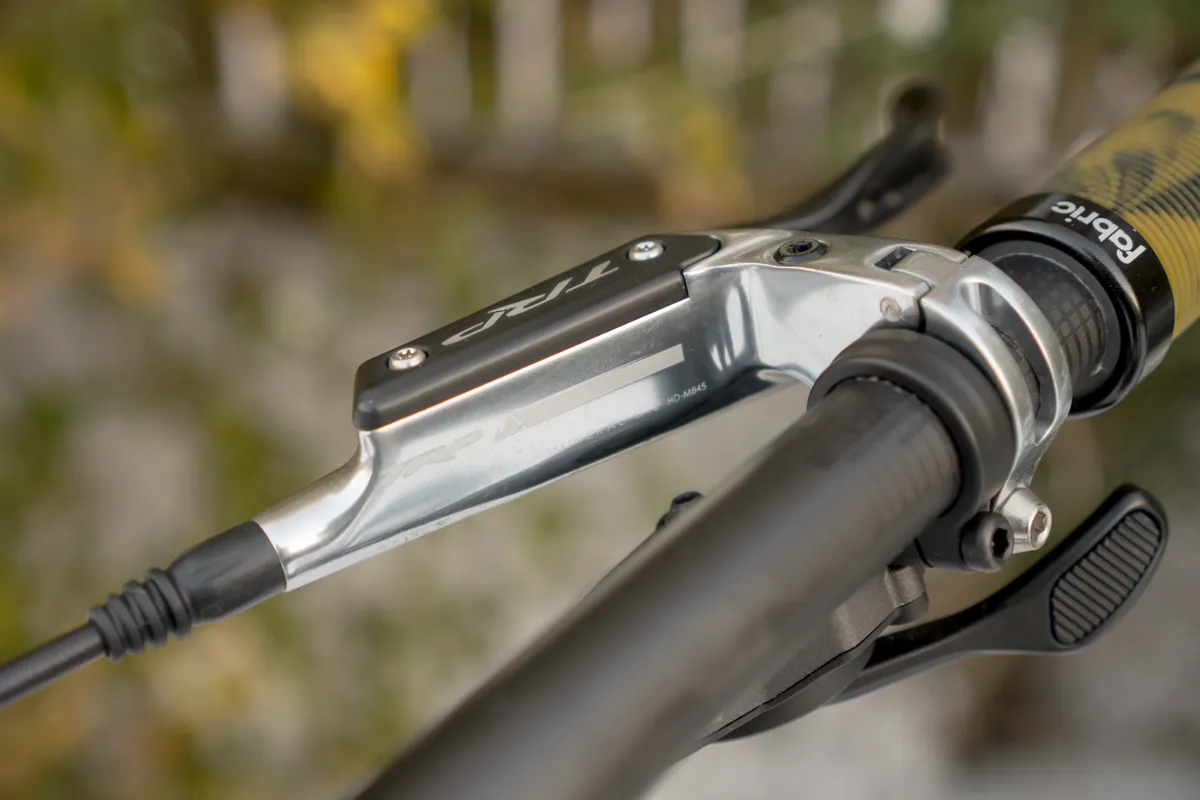
The DH-R EVO lever features a hinged lever clamp – fastened with a 4mm Allen bolt – and tool-less adjustable lever reach. The large aluminium lever blade has dimpled accents to help improve finger grip and has been designed for one-finger braking.
The lever uses a 9mm piston with a leverage ratio designed to increase power, while oil flow inside the four-piston calipers has been routed to increase its flow speed and further improve power.
Elsewhere, they use a 5mm hydraulic brake hose – claimed to handle hydraulic pressure better thanks to its stiffness and size, making it easier to route internally – that is filled with TRP’s own low-viscosity mineral oil with a claimed 230ºC heat stability rating.
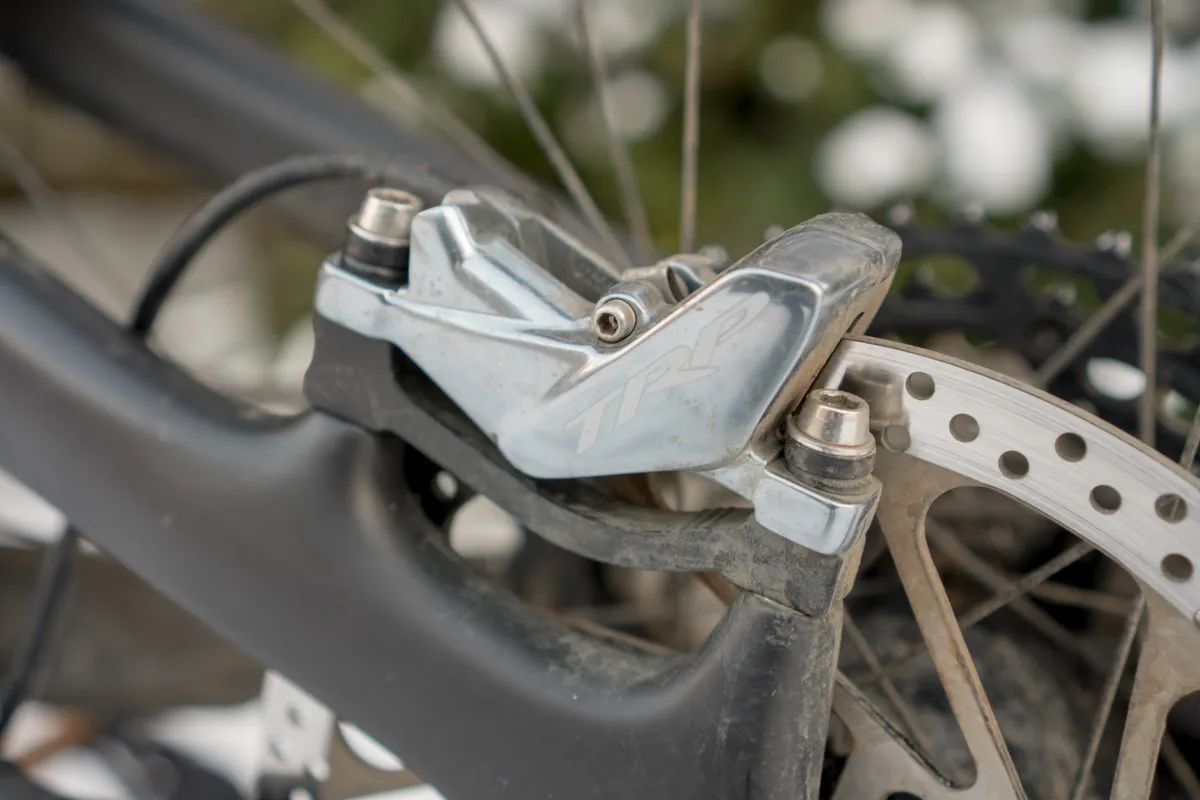
The system uses TRP’s own 2.3mm wide disc rotors in sizes from 160mm up to 223mm in diameter. The brand has also designed a performance resin compound brake pad that is claimed to resist heat and have shorter bedding in times than the previous model.
A lever, caliper and pads, and 190cm hose including oil weighed 332g on my scales. The 203mm rotor I tested the brakes with weighed 245g.
TRP DH-R EVO brakes set up
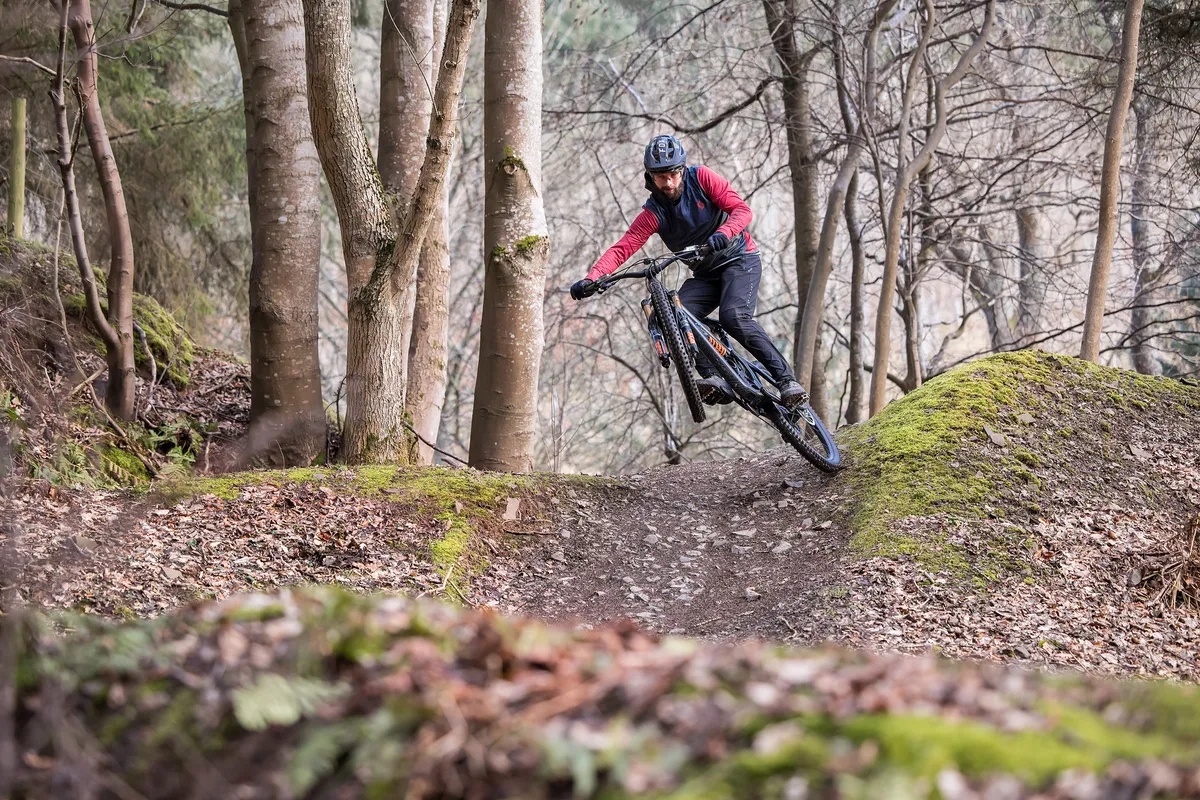
I fitted the DH-R EVO brakes to my Yeti SB165 long-term test bike to put them through their paces. And while the Yeti isn’t a DH bike, the trails I can access locally and ride it on are more than worthy of downhill performance brakes.
TRP DH-R EVO bleeding procedure
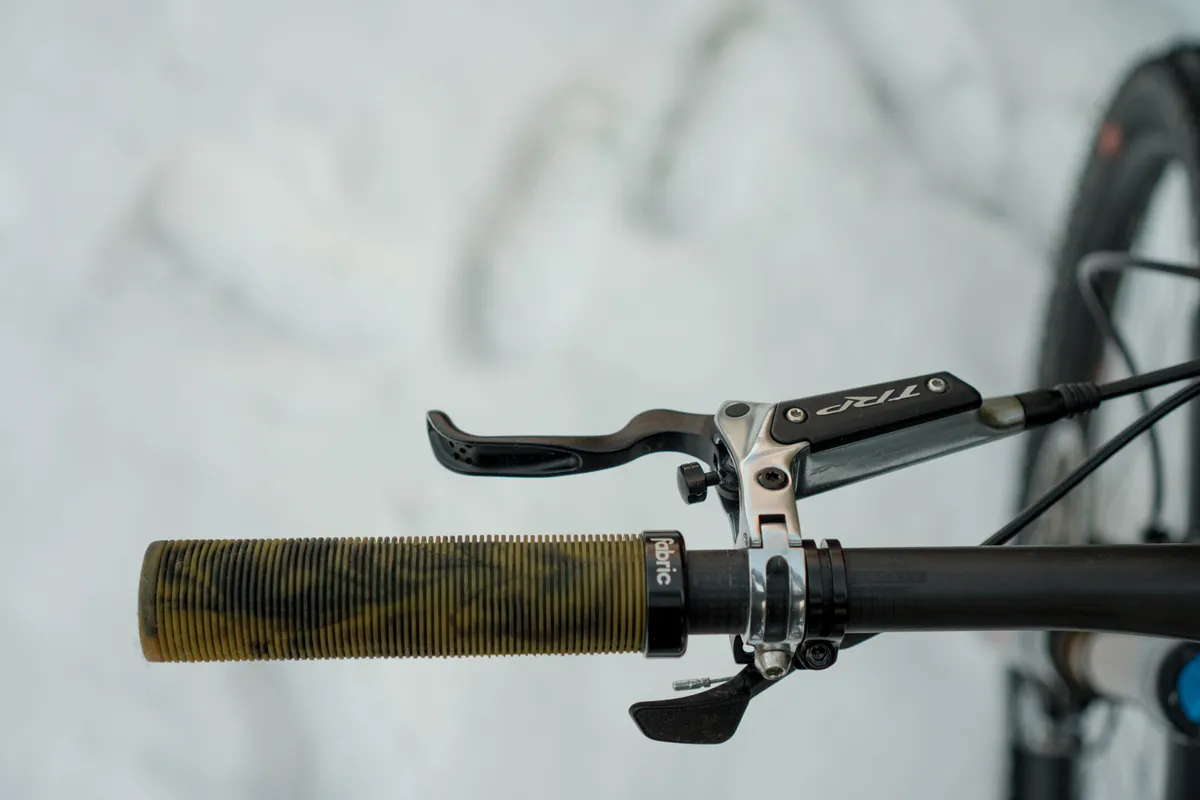
Although the brakes were supplied pre-bled with the lever and hose capped off – dubbed the EZ Plug System, which should make it easy to internally route the cable without losing any oil – photography requirements meant they needed to be drained, so I had to fully re-fill the system with oil and perform a total bleed before use.
TRP’s bleed instructions are simple to follow, but I found that once the system was entirely drained of oil it was tricky to purge all of the air, and the lever required a considerable amount of time to bleed correctly.
The DH-R EVOs needed the lever ‘flicking’ and squeezing with the bleed cup attached more than I expected – in the same way Shimano brakes do – to remove trapped air.
Despite spending plenty of time bleeding the brakes, I was never quite satisfied with their bite. After speaking to TRP about the lever feel, it explained that because the piston has a high leverage ratio – which means the brakes have more power for how much the lever is pulled – it can make them feel ‘softer’ than other brakes on the market.
To verify I hadn’t incorrectly bled or damaged the brakes, TRP sent me a second set of factory-bled DH-R EVO brakes that I installed without internally routing the cables. The feel of the factory-bled brakes was virtually identical to the set I'd bled, confirming the soft bite point of the brakes was normal.
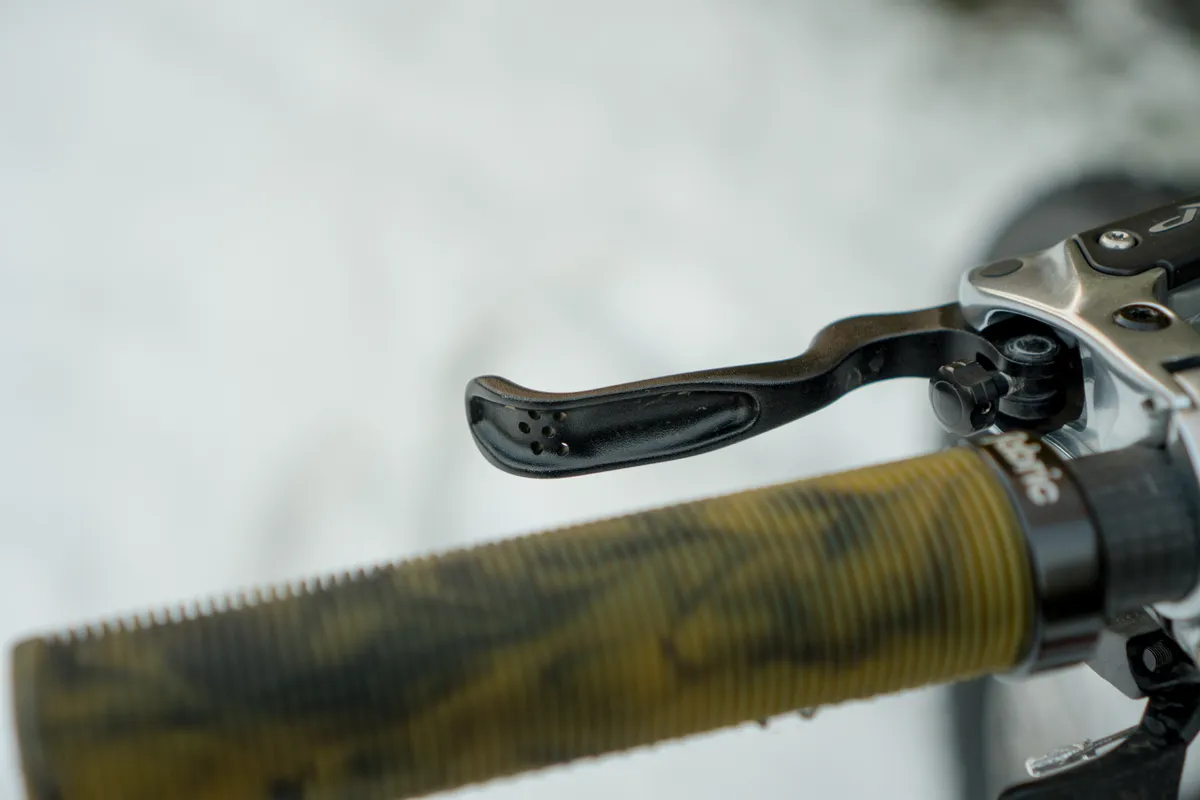
After testing the factory-bled brakes, I removed the hydraulic hose from the lever and internally routed it, requiring a re-bleed. Because the system hadn’t been fully drained of oil, bleeding them following TRP’s instructions was straightforward this time.
If you purchase a set of DH-R EVO brakes, I recommend trying your hardest to avoid draining the system of oil to reduce bleed times and the potential headache of chasing trapped air. Comparatively, the TRPs were harder to bleed than SRAM brakes, with its bleeding-edge system and two-syringe technique.
TRP DH-R EVO fitting and set up
The hinged lever clamp made fitting the brakes easy and, at 10mm wide, I had no problems getting them set to my preferred position.
The DH-R EVOs are compatible with SRAM Matchmaker and Shimano I-Spec systems, however an additional adaptor is required and isn’t supplied with the brakes. Centralising the pads over the disc was also easy.
Lever reach adjustment is tool-free, but there is no pad contact adjustment. Despite my preferences for running the lever blade as close to the bar as possible, the bite point remained far enough away, even once the pads had worn down, to not require adjustment.
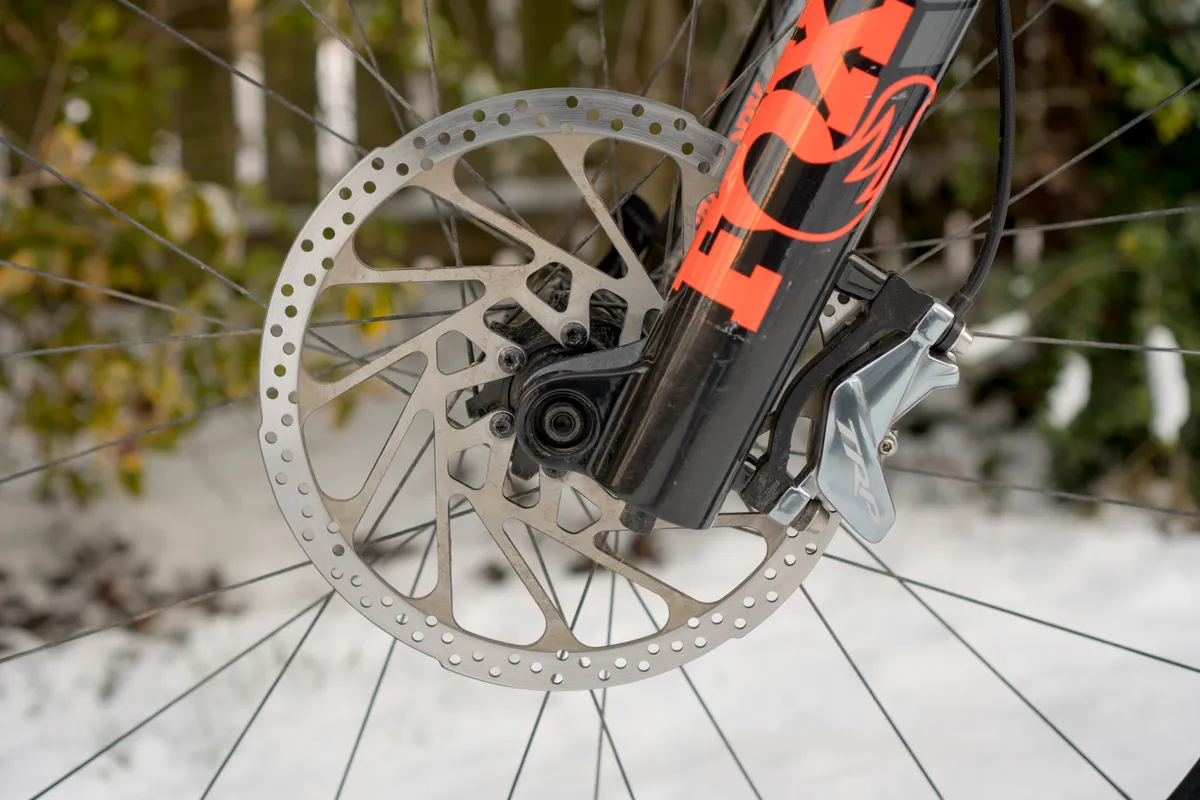
The lever blade is 87mm long, which is longer than Shimano and SRAM offerings. This meant I had to run the levers further inboard on the handlebar than usual which, without a Matchmaker or I-Spec adaptor, made it tricky to get my dropper post lever in my preferred position.
TRP DH-R EVO brakes on-trail performance
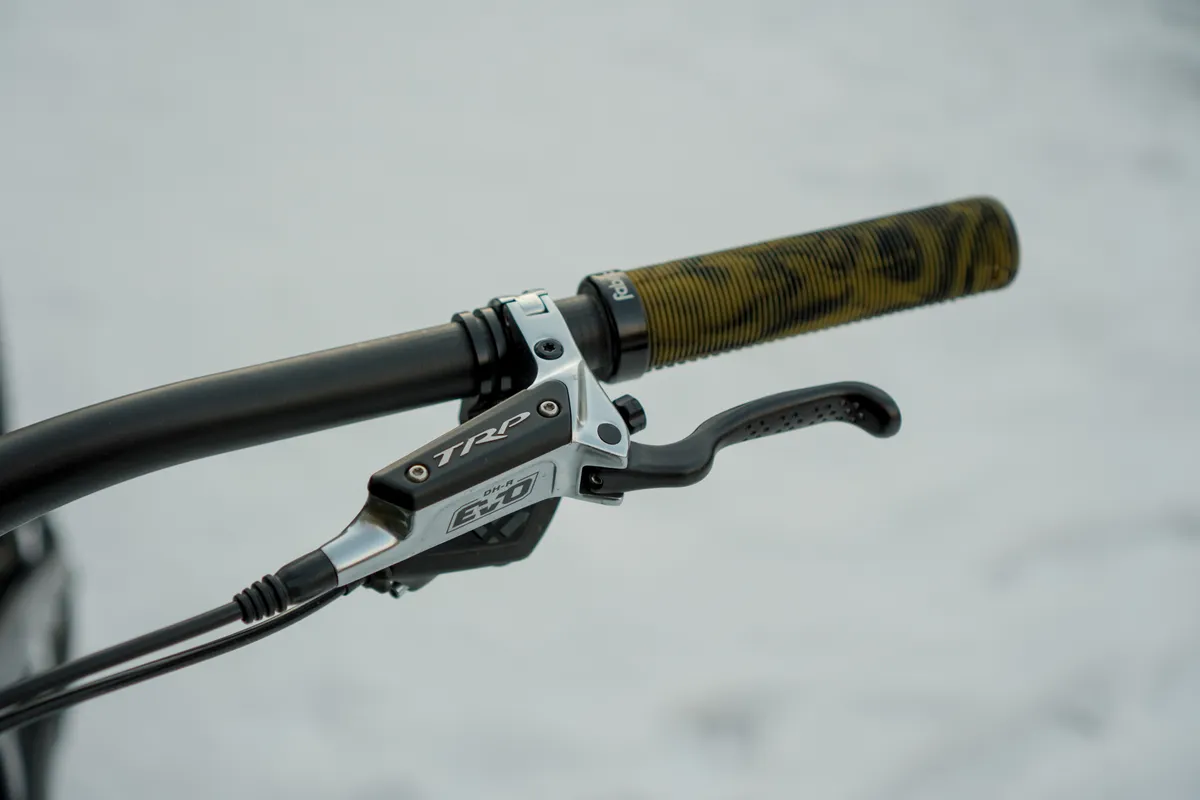
As mentioned, the DH-R EVOs have a soft or ‘spongy’ feel when the bike is stationary. The lever blade travels into and beyond the bite point as the brake’s pressure slowly ramps up.
Once moving and descending, the softer feeling bite point didn’t equate to a lack of power and only small, light movements of the lever were needed to access instant power and modulate the brakes to stop them from locking the wheels up.
The first few pulls of the brakes after bedding in the pads showed the DH-R EVOs to have immense amounts of power with a relatively light lever action. However, because the bite point is quite hard to identify – thanks to its softness – it was easy to pull them too hard causing the wheels to lock up. It took a fair amount of time to master their feel.
Once I’d sussed them out, I was impressed with the way the power was delivered. The initial squeeze of the lever created plenty of initial braking force, while increasing pressure kept the power ramping up in a controlled and predictable way. Modulation, therefore, was relatively easy.
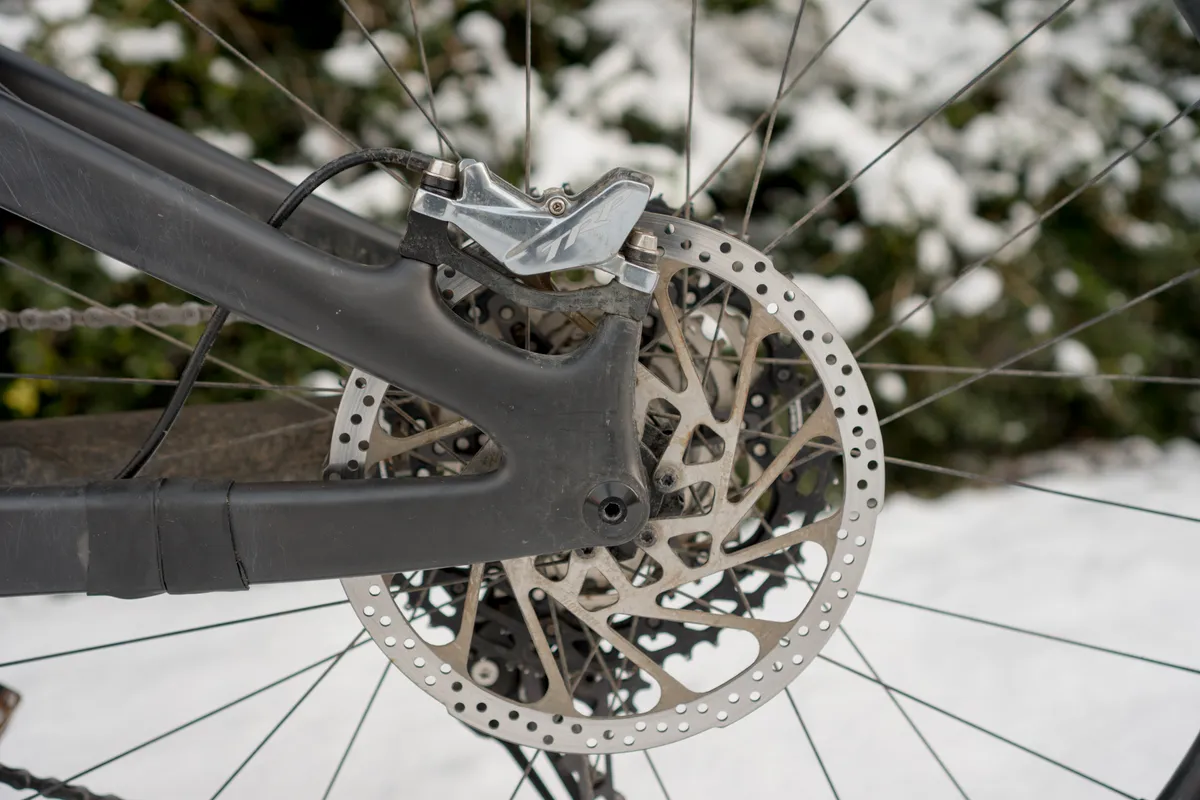
Overall, the lever feel was light and the amount of strength required to use the brakes certainly helped reduce fatigue. The lever blade is quite chunky when compared to Shimano’s svelte offerings, which meant my index fingers were stretched as they reached around the blade to pull it. Someone with longer fingers is unlikely to have this issue, though.
Even riding prolonged and steep descents at the Tweed Valley’s Golfie tracks didn’t reach the brakes' limits. They refused to overheat or pump up and, unlike some Shimano brakes, the bite point didn't alter.
Arguably, the TRPs have more power than Shimano’s latest four-piston offerings and SRAM’s Code RSC brakes, but they feel decidedly different.
I tried both the organic and sintered pads and preferred the longevity of the sintered offering for the wet and muddy conditions I most frequently ride in. The organic pads lasted fairly well, but at £20 they’re expensive to keep replacing.
I also found the pads moved in the calipers when the bike was stationary and the brakes were firmly applied. This created quite a lot of noise but didn’t translate to any adverse feelings on the trails.
TRP DH-R EVO bottom line
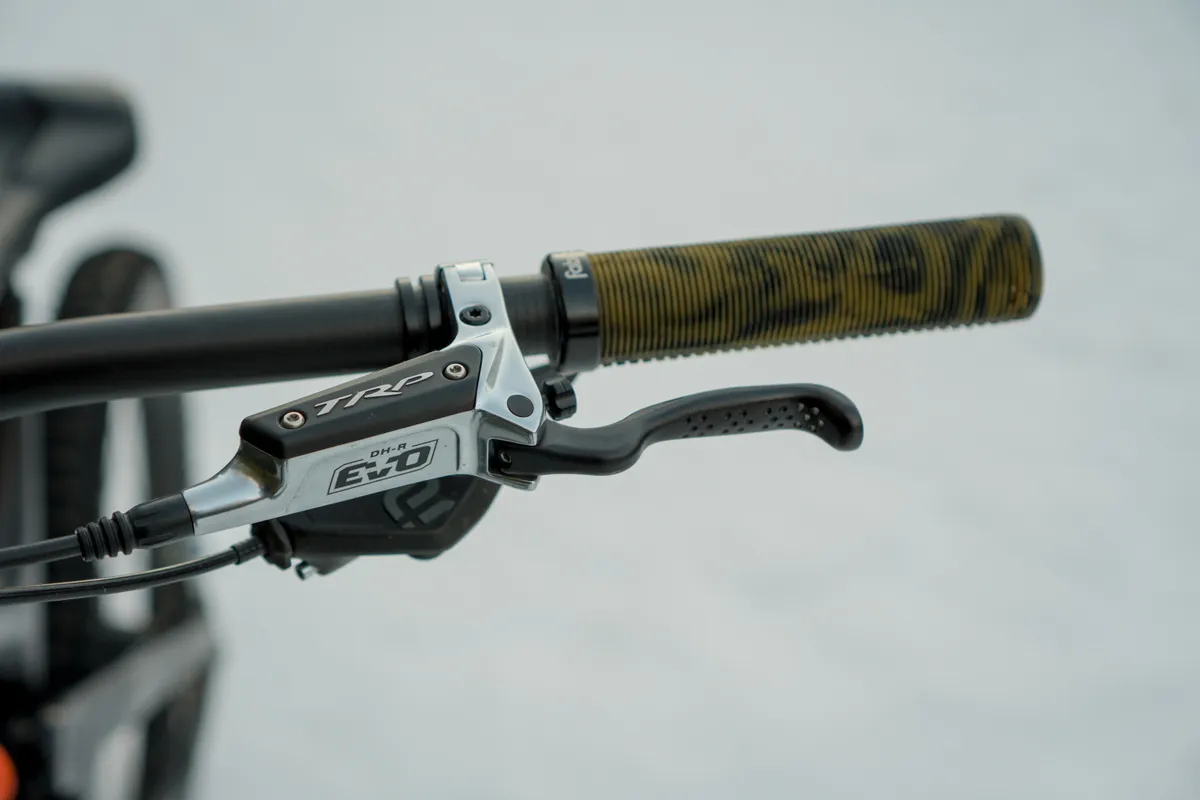
The DH-R EVO brakes offer incredible amounts of easily accessible power that doesn’t appear to fade on even the most brutally brake-heavy descents.
Their softer bite point takes a bit of getting used to, though, and might not suit some peoples’ preferences, but the lever feel is light and the power easy to modulate.
If you’re happy to adapt to the ‘soft’ feel, the DH-R EVO is a fantastically powerful and reasonably priced pair of stoppers.
Product
| Brand | Trp |
| Price | £210.00 |
| Weight | 577g |
| br_whatWeTested | TRP DH-R EVO with 203mm TRP rotors |
Features
| Brake type | hydraulic_disc |
| Features | Forged, CNC machined and polished lever body. Ergonomic lever blade. Dimpled accents for better grip on the trail. Advanced 9mm internal brake lever piston. Adjustable lever reach. Alloy master cylinder cap. Hinged lever clamp. Forged, CNC machined and polished caliper. New high flow design. Hybrid pistons. High performance resin pad compound. CNC machined and marked adapters. 2.3mm thick rotors. Compatible with 223/220/203/180/160/140mm rotors |
| Adjustment | Lever reach |
| Rotor sizes | 223/220/203/180/160/140mm rotors |
